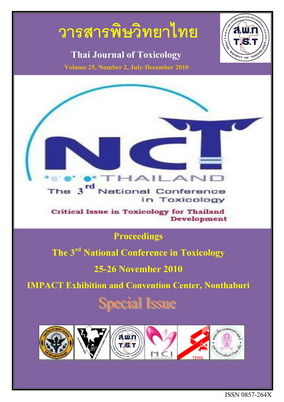Factors on Improper Pesticide Application in Chinese Kale Cultivation
Main Article Content
Abstract
Chinese kale (Brassica Oleracea) is an important industrial crop of Thailand that is mostly consumed by Thai people. However, there are many studies found the problem of pesticide residues in Chinese kale. This study aimed to investigate the factors of improper application of pesticides in Chinese kale cultivation. The application of pesticides were gathered by conducting the interviews and questionnaires with the farmers. Brainstorming during researchers, farmers and technical specialist of the provincial agricultural extension offices in study areas. Most farmers receive the knowledge of pesticide application from both district agricultural extension office and pesticides store. There were 34 types of pesticides which the farmers used in Chinese kale cultivation including 19 types of insecticides, 9 types of fungicides, and 6 types of herbicides. The result revealed that types of pesticides that the related government agencies should monitor strictly including Dicrotophos, Methomyl and Metalaxyl. While, other pesticides such as Abamectin, Mancozeb, Propineb, Alachlor and Paraquat which are popular using by the farmers, should be protect of risk occurrence by dissemination of accuracy and appropriate knowledge about good practice of pesticide application, pre harvest interval, pesticides storage and elimination of pesticide container. Factors which caused improper pesticide application in Chinese kale cultivation including specific characters of vegetable which are short term cultivation, planted throughout the year and there are various types of pest. Most of farmers did not have good management of water resource and cultivated areas including lacking of good agricultural knowledge. In addition, problem of marketing and price of product were also the important factors.


